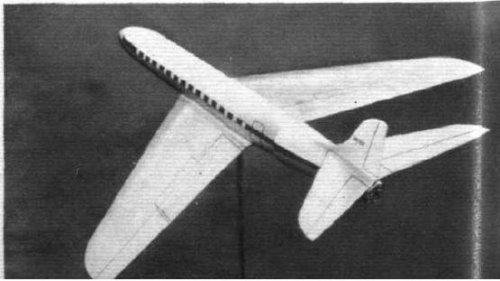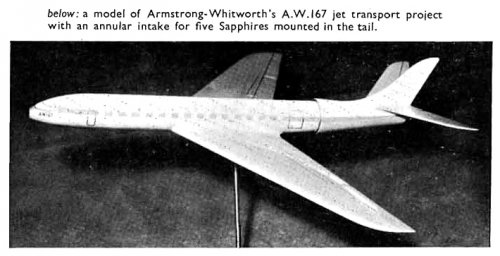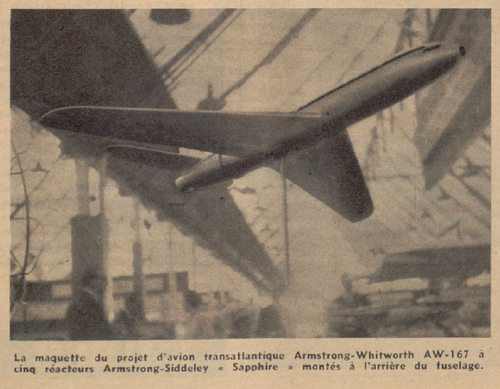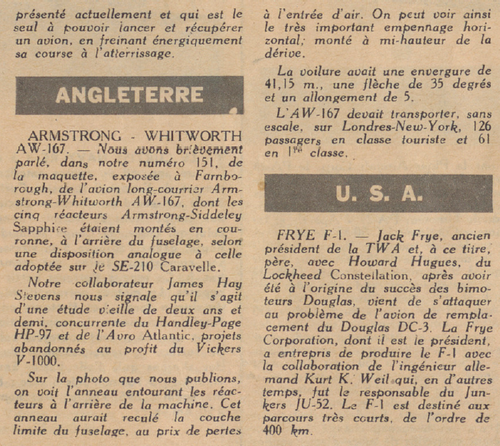- Joined
- 26 May 2006
- Messages
- 34,926
- Reaction score
- 15,796
Hi,
the AW.167 was five engined airliner and transport aircraft project
of 1955,the five engine (Sapphir) were mounted in the tail,I can't
imagine how !.
the AW.167 was five engined airliner and transport aircraft project
of 1955,the five engine (Sapphir) were mounted in the tail,I can't
imagine how !.
Attachments
Last edited:






